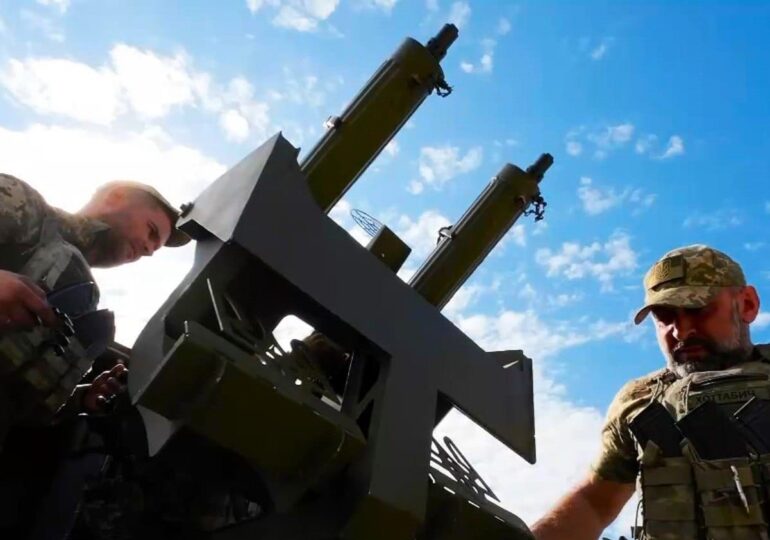The world has witnessed a staggering increase in conflicts over the past year. It is estimated that at least 233,000 people were killed in conflicts in 2024, according to new data published in the last month of the year by a crisis analysis and mapping organization.
The data, published by the Armed Conflict Location and Event Data (ACLED), show in raw numbers how the level of conflicts worldwide has doubled in the past five years, against the backdrop of wars in Ukraine, Gaza, Myanmar, and elsewhere, as reported by The Washington Post.
This year, ACLED found that the number of people killed in conflicts in 2024 increased by 30% compared to the previous year, from 179,099 deaths in 2023 to at least 233,597 in 2024.
The war in Ukraine was the deadliest in 2024, with 67,000 reported deaths, while 35,000 deaths were reported in the Palestinian territories of Gaza and the West Bank.
By the end of the year, it is anticipated that the number of violent incidents recorded by ACLED will reach nearly 200,000, about 25% more than last year and double compared to five years ago. Significant increases were recorded in Lebanon (958%), where Israel conducted a large-scale military intervention, and in Russia (349%), which saw more attacks amid its ongoing invasion of Ukraine.
1 in 8 people exposed to conflict
Violence has reached remarkable proportions. One in 8 people worldwide was exposed to conflict in 2024, according to ACLED. Individuals living within a distance equal to or less than 5 kilometers from a conflict are considered exposed. According to the data, Palestinians face the highest level of violence in the world, with 81% of the population exposed to conflicts.
And this may not be the peak. Clionadh Raleigh, a professor of political geography and conflict at the University of Sussex and founder of ACLED, expects global conflicts to continue to rise, highlighting "possible explosions of violence" in Iran, Chad, Ecuador, and Pakistan.
The world could enter a "new normal" of conflicts, says Paul Poast, a professor at the University of Chicago who tracks global violence and was not involved in drafting the ACLED report.
This would have political implications in the United States, where President-elect Donald Trump repeatedly promised to "stop the war." Trump "claimed he would resolve all these conflicts as soon as he took office (if not before)," Poast wrote in an email. "Indeed, it struck me that during his victory speech on election night, the first thing he mentioned was ending all conflicts in the world," the professor noted.
An era of wars at the beginning of the third millennium
The data from the past few years paints a disturbing picture: few regions have seen a decrease in conflicts, while both Europe and the Middle East have experienced major escalations. Research by other groups describes the same trend. Last summer, a report published by the Institute for Economics and Peace, based in Sydney, identified 56 active conflicts taking place at that time, which, according to the report, represents the highest number of conflicts since the end of World War II.
International peace - the founding hope of the United Nations - is becoming increasingly distant as the trend intensifies.
The high level of global conflicts has multiple and complex causes, including choices made by world leaders, such as Russian President Vladimir Putin's decision to invade Ukraine in 2022. But there have also been global changes in the way conflicts are waged, according to data collected by ACLED.
"In 2024, conflicts have become more urbanized and concentrated, and the same places and communities have been attacked multiple times," Professor Raleigh states, adding that the world has seen a 300% increase in the use of bombings in the last five years. The widespread use of rockets, drones, and explosives by governments has further escalated the level of conflicts, Raleigh says.
Why are there so many conflicts?
According to ACLED data, some conflicts appear to be linked to electoral politics, with countries that held elections experiencing a more significant increase in violence. Nearly 80 countries, representing over half of the world's population, held national elections in 2024.
The conflict data also tracks incidents of what the authors call political violence - defined as including beatings, explosions, and other violent acts - and excludes nonviolent protests.
ACLED also reports over 143,000 protests in 2024.
The ongoing disintegration of the global order and the rise of multipolarity - a global system in which power is more widely distributed, with global bodies like the United Nations Security Council paralyzed - have led major powers to "assert their regional influence and undermine each other," says Poast. UN Secretary-General António Guterres described this state of affairs as a "purgatory of polarity" in a speech to the General Assembly in September.
What to expect in 2025?
ACLED, operating as a nonprofit organization for just over a decade, collects its data by monitoring the mass media, as well as through partnerships with international and local organizations. Its purpose is to provide an overview of trends in armed conflicts by collecting global and detailed data.
In the coming year, some conflicts may diminish - especially the war in Ukraine and the fights in the Middle East. Some countries, such as Madagascar, have seen a prolonged decrease in political violence in recent years, according to ACLED.
However, ACLED forecasts a 20% increase in conflicts next year in several regions of concern, including Colombia and Mexico, as well as in various areas in Africa, such as the Sahel and the Great Lakes region. The Middle East remains in a period of great uncertainty, while the risk of new wars involving China or Russia cannot be ruled out.
This year "might be a peak, but 2025 could still be well above the post-Cold War average," Poast stated. "Also note that the greatest potential conflict of all, a war over Taiwan, remains a possibility and could indeed become more likely," the professor points out.

